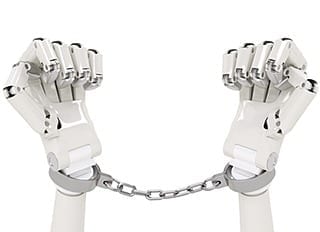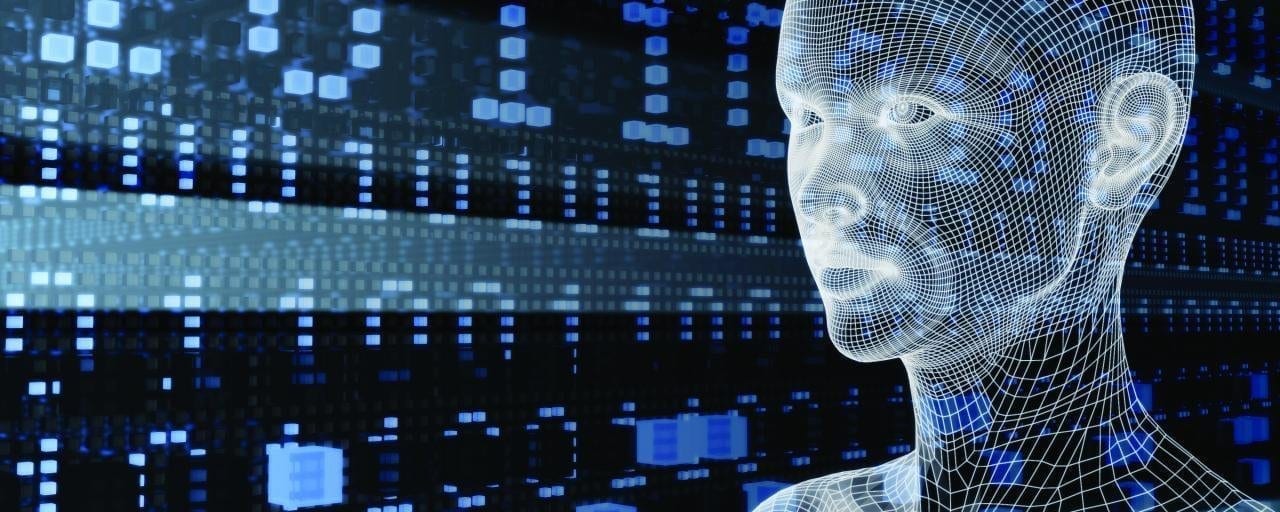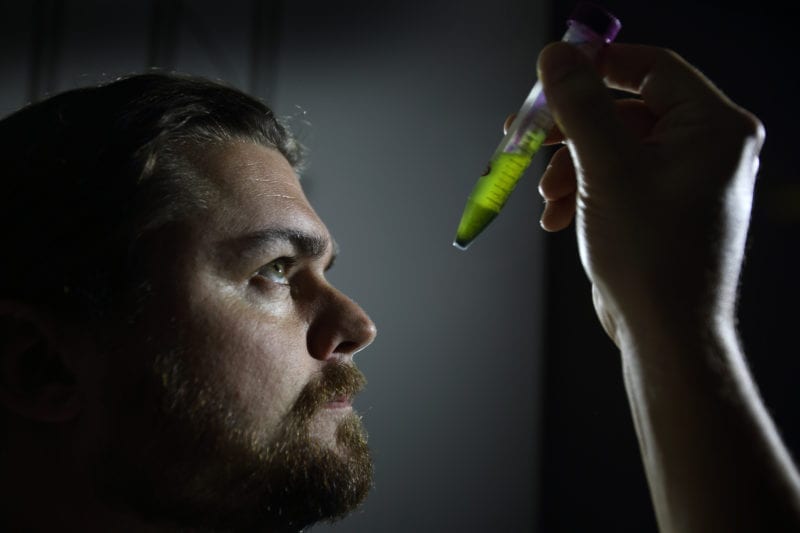
There has been much discussion of late of the ethics of artificial intelligence (AI), especially regarding robot weapons development and a related but more general discussion about AI as an existential threat to humanity.
If Skynet of the Terminator movies is going to exterminate us, then it seems pretty tame — if not pointless — to start discussing regulation and liability. But, as legal philosopher John Donaher has pointed out, if these areas are promptly and thoughtfully addressed, that could help to reduce existential risk over the longer term.
In relation to AI, regulation and liability are two sides of the same safety/public welfare coin. Regulation is about ensuring that AI systems are as safe as possible; liability is about establishing who we can blame — or, more accurately, get legal redress from — when something goes wrong.
The finger of blame
Taking liability first, let’s consider tort (civil wrong) liability. Imagine the following near-future scenario. A driverless tractor is instructed to drill seed in Farmer A’s field but actually does so in Farmer B’s field.
Let’s assume that Farmer A gave proper instructions. Let’s also assume that there was nothing extra that Farmer A should have done, such as placing radio beacons at field boundaries. Now suppose Farmer B wants to sue for negligence (for ease and speed, we’ll ignore nuisance and trespass).
Is Farmer A liable? Probably not. Is the tractor manufacturer liable? Possibly, but there would be complex arguments around duty and standard of care, such as what are the relevant industry standards, and are the manufacturer’s specifications appropriate in light of those standards? There would also be issues over whether the unwanted planting represented damage to property or pure economic loss.
So far, we have implicitly assumed the tractor manufacturer developed the system software. But what if a third party developed the AI system? What if there was code from more than one developer?
Over time, the further that AI systems move away from classical algorithms and coding, the more they will display behaviours that were not just unforeseen by their creators but were wholly unforeseeable. This is significant because foreseeability is a key ingredient for liability in negligence.
To understand the foreseeability issue better, let’s take a scenario where, perhaps only a decade or two after the planting incident above, an advanced, fully autonomous AI-driven robot accidentally injures or kills a human and there have been no substantial changes to the law. In this scenario, the lack of foreseeability could result in nobody at all being liable in negligence.
Blame the AI robot
Why not deem the robot itself liable? After all, there has already been some discussion about AI personhood and possible criminal liability of AI systems.
But would that approach actually make a difference here? As an old friend said to me recently:
Leaving aside whether AI systems can be sued, AI manufacturers and developers will probably have to be put back into the frame. This might involve replacing negligence with strict liability – liability applied without any need to prove fault or negligence.
Strict liability already exists for defective product claims in many places. Alternatively there could be a no fault liability scheme with a claims pool contributed to by the AI industry.
Read more: Who’s to Blame when Artificial Intelligence Systems Go Wrong?
The Latest on: Ethics of artificial intelligence
[google_news title=”” keyword=”ethics of artificial intelligence” num_posts=”10″ blurb_length=”0″ show_thumb=”left”]
via Google News
The Latest on: Ethics of artificial intelligence
- Deployment of AI technology must be approached with ethical rigour — Catholic Bishopson May 9, 2024 at 12:31 am
The Catholic Bishops’ Conference of Nigeria (CBCN) has said that despite its enormous advantages, the deployment of artificial intelligence must be approached with ethical rigour.The President of CBCN ...
- In an Era of Artificial Intelligence and Big Data, Human Touch Is Neededon May 8, 2024 at 6:19 am
While AI can assist with some decisions, it’s feasible that, at some level, overreliance on these technological capabilities ...
- A university creates an artificial intelligence institute, partly to help governmenton May 7, 2024 at 3:06 pm
The University of Maryland has launched of a new institute dedicated to developing the next generation of artificial intelligence people.
- A physicists’ guide to the ethics of artificial intelligenceon May 6, 2024 at 6:00 am
Physics may seem like its own world, but different sectors using machine learning are all part of the same universe.
- Northern Kentucky University offering minor in artificial intelligenceon May 2, 2024 at 1:59 pm
Artificial intelligence is a controversial topic in today's society. The risks associated with it are concerns that are often voiced.
- Cultivating Ethical Intelligence: Navigating the Landscape of AI Ethics in the Digital Ageon May 2, 2024 at 3:00 am
In this contributed article, Dev Nag is the CEO/Founder at QueryPal, discusses how the evolving regulatory environment, highlighted by initiatives like the Biden administration's executive order, ...
- The Flaw in Artificial Intelligence’s Limitless Potentialon April 29, 2024 at 5:00 am
Using AI, our ability to make decisions increases exponentially, which, in mission-critical industries, means saved lives or expedited justice.
- Pope Francis to Attend G7 Summit to Speak on Artificial Intelligenceon April 27, 2024 at 9:51 am
Italian Prime Minister Giorgia Meloni announced that the Holy Father accepted her invitation. Pope Francis will attend the G7 summit in June to speak about the ethics of artificial intelligence, ...
- Pope to take part in G7 summit in June to talk Artificial Intelligenceon April 26, 2024 at 11:35 pm
The pope’s participation will mark the first time a pontiff has taken part in a G7 summit, which has been meeting on a regular basis since 1975 and is considered the most important annual gathering of ...
- Pope to bring his call for ethical artificial intelligence to G7 summit in June in southern Italyon April 26, 2024 at 12:57 pm
Pope Francis is taking his call for artificial intelligence to be developed and used according to ethical lines to the Group of 7 industrialized nations. Italian Prime Minister Giorgia Meloni ...
via Bing News










